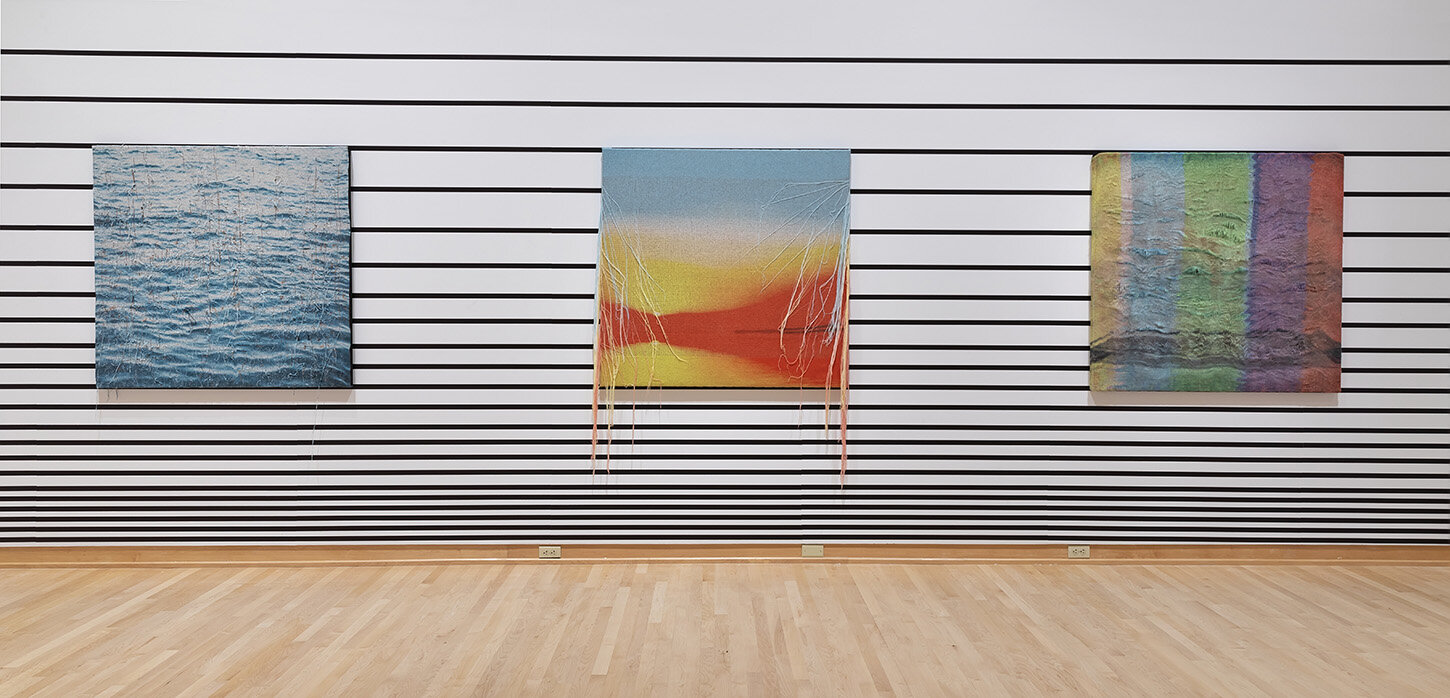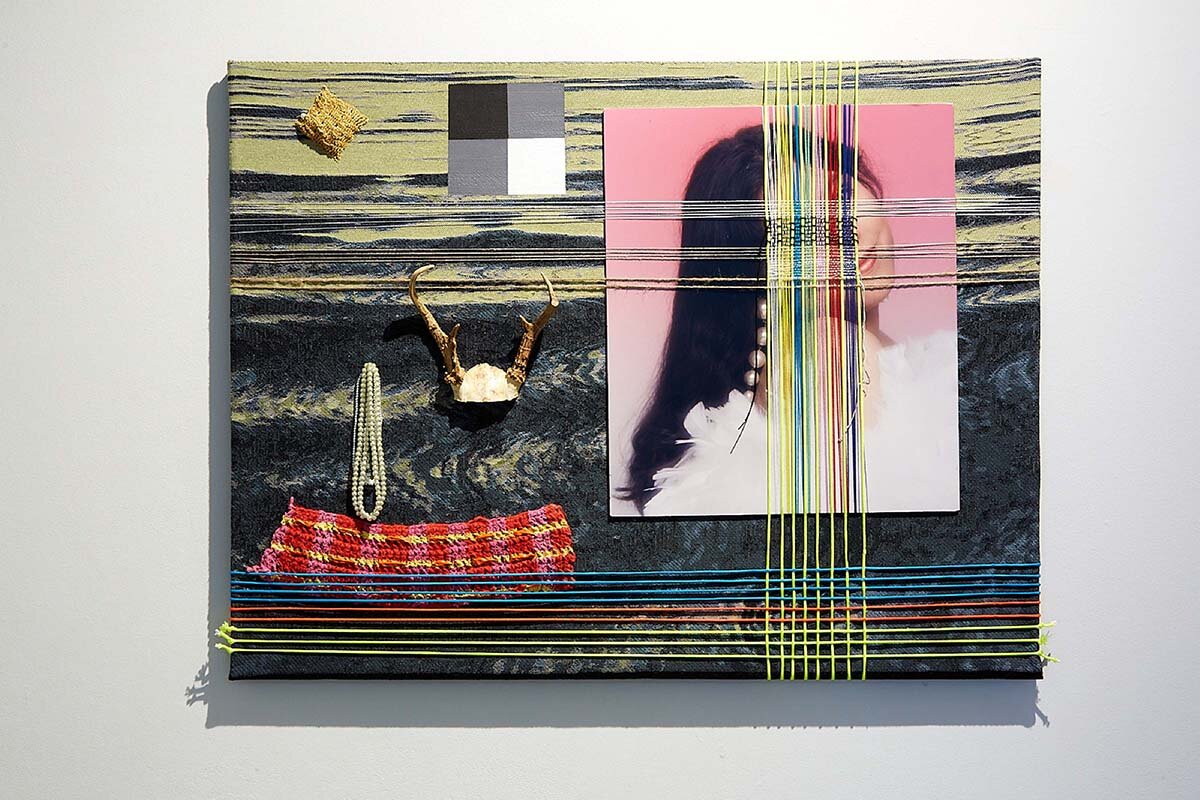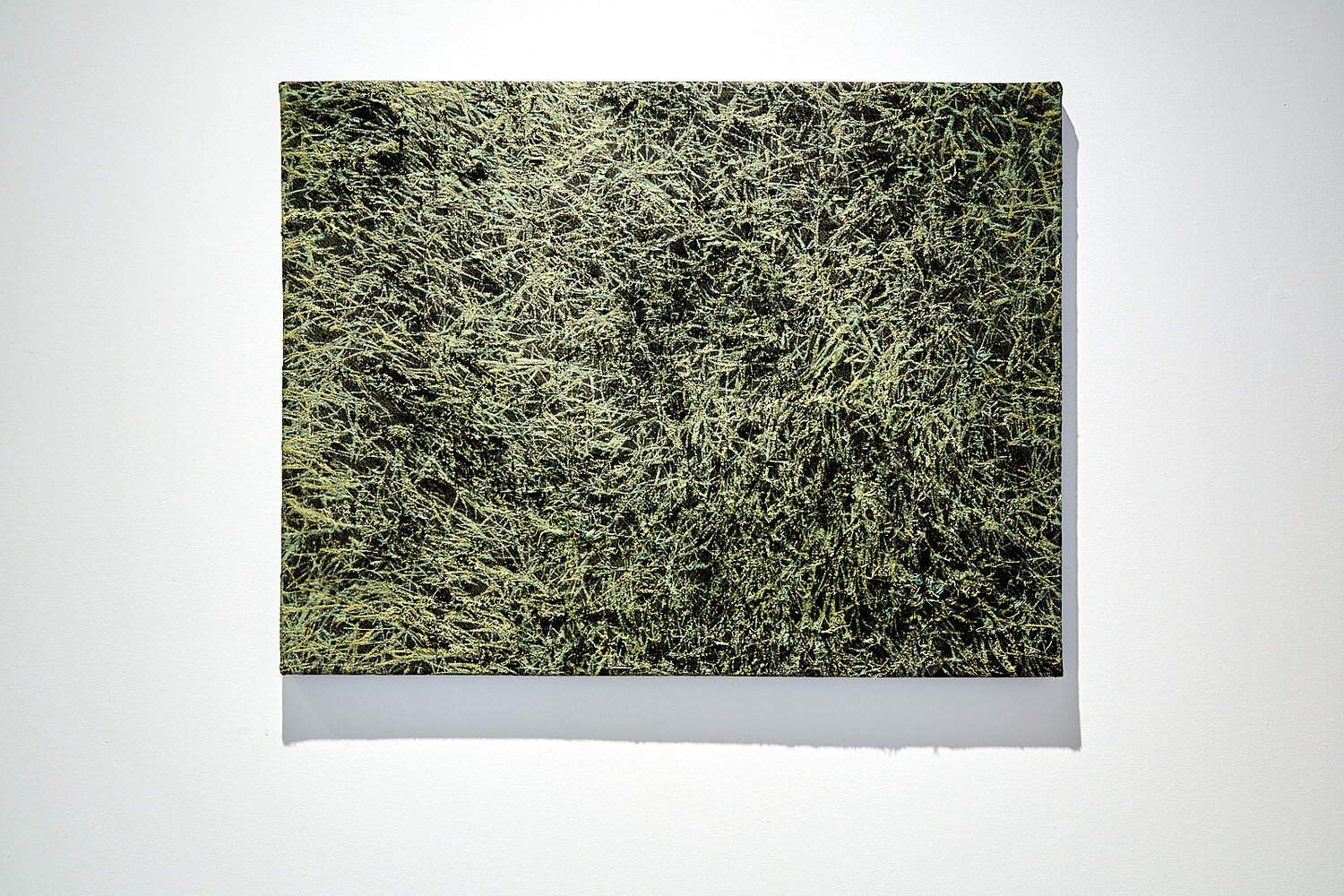Danielle Andress
Name: Danielle Andress
Studio location: Hyde Park, Chicago, IL
Website / social links: danielleandress.com, @danielle_andress
Loom type or tool preference: Macomber Looms (4-8 harness)
Years weaving: 17
Fiber inclination: polyester, cotton, novelty yarns
Current favorite weaving book: I always find myself going back to the standards: A Handweaver's SourceBook and Weaver's Book of 8-shaft Patterns
1. How did you discover weaving and was what your greatest resource as a beginner?
I was very fortunate in getting to study weaving in depth in college at a private art school. The program dictated that all students in the department complete at least 2 years of weaving, which honestly is about what it takes to learn the craft (and even then, it’s just a start). I had a couple of amazing instructors, Susan Sklarek and Lisa Scull especially, who really supported and challenged me in ways I’d never experienced. Like many young artists, I learned through failure. In weaving especially, there are many lessons in making mistakes. Weaving requires tenacity and patience and I continue to learn from mistakes in the studio - I lost a cross last year!
2. How do you define your practice – do you consider yourself an artist / craftsperson / weaver / designer / general creative or a combination of those? Is this definition important to you?
I consider myself an artist. While it’s critical that one positions themselves within the histories of their work, like weaving or painting or whatever, there’s so much overlap between art and craft. Thinking of the two as totally separate entities with no overlap, which historically only served to position “fine art” (painting, sculpture, and later photography/film) above craft, is limited and frankly an out of date (and touch) way of thinking. In the last 10+ years, there’s been a resurgence of fiber-based work along with other craft-based mediums in the art world which is both exciting and frustratingly overdue. The work of contemporary weavers is absolutely astonishing, innovative, well deserving of this notoriety.
3. Describe your first experience with weaving.
I had no idea what the hell was going on! I’m the type of person who learns by doing so when I was winding that first warp it was a leap of faith – and I’m not a religious person. I had basic tapestry/frame loom weaving experience but I couldn’t understand the process or outcome of seeing the warp in an expanded way. I couldn’t wrap my head around what I was doing. But once the loom was dressed and I was sitting on the bench pushing the treadles, weaving, it all came together and I was hooked.
4. What is your creative process, from the initial idea to the finished piece? Are there specific weave structures, looms, or fibers that are important to your process?
My studio work starts with research. I’m interested in the pathways and systems in which images, ideas, and language circulate so this research varies from reading, scouring the internet, watching TV (mostly standup comedy, serial television, reality tv - not because I like it but because they’re the most perishable, consumable mediums), and browsing art and hardware stores for new materials. I have physical and digital folders in my studio, on my desktop, and in my phone that very loosely catalogue the things I find.
I’m also fortunate to teach weaving and have absolutely amazing conversations with the younger artists in my classes. I’m an elder Millennial and don’t think I’m too out of touch with pop culture and vernacular understanding but these students keep me young! They’re also so smart and interesting.
Eventually my research and these conversations are metabolized and become material through weaving. I utilize a combination of hand and digital weaving techniques and I occasionally outsource woven projects as well. For years, I was seduced by the complex structures looms can provide a weaver and would write ridiculous drafts, trying to do everything in a single project. I gradually realized flexing a technical muscle wasn’t actually appealing or important to my work and I returned to the simplest forms of weaving: pain weave and standard twills.
I also use a dye transfer technique called dye sublimation printing which only works with synthetic materials so there’s a lot of polyester and rayon in my arsenal. The work is largely stretched and hung on the wall so it’s okay if it feels disgusting.
5. Does your work have a conceptual purpose or greater meaning? If so, do you center your making around these concepts?
Yes and yes. And because the conceptual motivations behind the work are complicated and multi-faceted, I’m usually working with the same ideas for several years until they eventually evolve into something different. Weaving is a slow craft and the world often changes faster than I can respond to it so I’m always playing catch-up.
6. What is your favorite part of the weaving process and why? What’s your least favorite?
My favorite part of the process is the planning and dressing of the loom. I love winding warps. Strangely, my least favorite part might be the weaving itself. This is probably because most of my work requires yardage of the same, uncomplicated weaving. After three weeks of the same task, it can get a bit dull.
7. Do you sell your work or make a living from weaving? If so, what does that look like and how has that affected your studio practice?
I do sell my work though the majority of my income now comes from teaching and grants. I used to be a self-employed designer, mostly making jewelry and wearable wovens. Both of these approaches affect my studio practice but in different ways.
When I was a designer, I was juggling my labor and the cost of the materials while also trying to make something “sellable.” This was hard because I was designing around trends and popular aesthetics, not my ideas or convictions as a maker. It was important to me to keep the work accessible so the price points were never too high and therefore the work was never too intricate or luxurious.
I had a few years of working the big craft show circuits and eventually got into wholesale which was less financially stressful but also way less fun. I felt like a 1-person factory. I eventually quit because I wasn’t fulfilled and was having health problems related to working that way. Now that I sell work as “art”, consumable price structures don’t apply as much. I also sell much less work that I did as a designer.
In general, I don’t have artwork in commercial galleries and tend to exhibit more in non-profit, museum, unconventional, or community art spaces. I prefer this structure because it takes a little pressure off. The success of an exhibition isn’t attached to the show selling out. The commercial art world/market is a really wild place and for now, I prefer to stay on the periphery.
8. Where do you find inspiration?
The internet but that’s because so much of our experiences take place on or are immediately (if not literally) connected to the internet. I also run which I actually hate. Running and entering a space of total discomfort is where I can mentally work through ideas and start to plan the work.
9. What other creatives do you admire – weavers, artists, entrepreneurs – and why?
There are too many to name! But I will say that the weaving community is one of the best places you can be. Folx are supportive, generous, and they show up for one another. To put a reality tv metaphor on it: a lot of the art world operates like Survivor but weaving/fiber is like The Great British Bake Off - there’s endless support and we’re cheering for each other. That’s probably an unfair generalization about other creative fields but in my experience, fiber folk are the kindest.
10. If you could no longer weave, what would you do instead?
I’ve had a lot of weird jobs over the years to support my studio practice, some of them were great and others not so much. I would consider returning to some of the better ones: I was a third-shift baker (hired to weave pie crusts!), I was a bartender for 10+ years, and I used to do acrylic nail art. In their own way, all of these are creative jobs and probably why I liked them the best. But if I had to choose one, I’d be a nail technician.
Do you have any upcoming exhibits, talks, or events the community should know about?
I have work included at the John Michael Kohler Art Center’s 2021 anchor show, High Touch (curated by Kaytie Johnson) on view until early 2022. There are other exciting projects in the works that I hope to share soon!
Untitled (Rubbed Sunset). Industrially produced weaving with dye sublimation printing on stretched canvas hung on custom wallpaper. 50” x 48”. 2021.
Untitled (Rubbed Triptych). Industrially produced weaving with dye sublimation printing on stretched canvas hung on custom wallpaper. Dimensions variable. Each weaving is 50” x 48”. 2021.
All The Warmth That Wood Can Give, handwoven polyester with dye sublimation printing, fur pelt, handwoven cotton swatches, gold chain, silver chain, embedded nail frame loom, and handwoven glass beads on stretched linen. 56” x 46”. 2017.
Untitled (Rubbed Color Bars). Industrially produced weaving with dye sublimation printing on stretched canvas hung on custom wallpaper. 50” x 48”. 2021.
Untitled (Rubbed Water). Industrially produced weaving with dye sublimation printing on stretched canvas hung on custom wallpaper. 50” x 48”. 2021.
Fake It ‘till You Make It, Jacquard woven cotton, rayon, mounted Glamour Shots photograph (1997), paracord, jute, linen, Jellycord, synthetic yarn, glass beads, acrylic paint, White Tail Deer antlers (shot 1976), cotton and polyester thread on stretched canvas. 46” x 35” x 7”. 2020.
1993-2021, ongoing series of handwoven polyester with dye sublimation printing stretched on canvas, hung on site-specific wall painting. Dimensions variable. Each weaving is 19” x 19”. 2019 - (ongoing).
Untitled (The Grass is Always Greener), Jacquard woven cotton and rayon on stretched canvas, 46” x 35” x 2”, 2020. Photo by Rustin McCann.
Untitled (The Grass is Always Greener), Jacquard woven cotton and rayon on stretched canvas, 46” x 35” x 2”, 2020. Photo by Rustin McCann.














